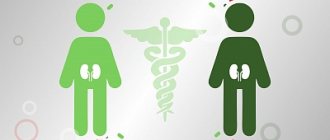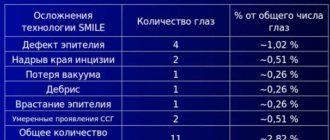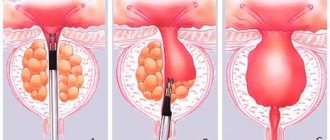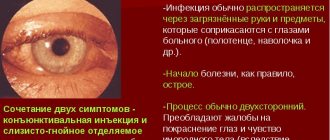When diagnosed with prostate cancer, surgery is a guaranteed way to get rid of the source of mortal danger. After excision, the tissue of the affected gland is subjected to histological examination, based on the results of which the oncologist will determine a further treatment plan for the disease. One of the unpleasant consequences for a man after surgery is erectile dysfunction. Conducting sexual rehabilitation is one of the steps towards returning the patient’s usual quality of life.
Prostatectomy: consequences of surgery to remove prostate cancer
For a patient who wakes up after anesthesia, in addition to pain, the unpleasant consequences of removing the prostate for cancer include urinary incontinence. The issue of erectile dysfunction begins to bother a man a little later, already in the process of recovery after surgery to remove prostate cancer. The scale of the consequences for a man depends on several factors:
- health status and intensity of sexual activity before surgery;
- patient's age;
- the extent of tumor growth;
- a method of excision of tissue affected by cancer.
Normally, spontaneous restoration of erectile mechanisms takes from 3 months to a year after surgery. If no improvement is observed, the patient will need the help of a specialist.
Why does sexual function decrease due to radical prostatectomy?
A decrease in potency can be observed in the patient even before treatment begins. Erectile dysfunction in men after 50 years of age is not a rare occurrence, given that many attribute the “fading of strength” to age and do not consult a doctor. If, before the discovery of oncology, a man was sexually active, the contrast of changes in well-being will be noticeable and can shake the patient’s self-esteem.
Why are the consequences so pronounced after removal of the prostate for cancer? Radical surgery is performed primarily on young patients. Thanks to modern diagnostic methods, prostate cancer can be detected in the early stages even in the younger generation. Thus, it is possible to radically remove prostate cancer without reducing the quality of life.
According to doctors, the main reason for the development of erectile dysfunction after removal of prostate cancer is injury to the neurovascular bundles during surgery. They can be purposefully removed if the tumor damages adjacent tissues, but in most cases the surgeon tries to preserve the innervation pathways of the penis. However, the degree of risk depends on:
- on the method of performing the operation. For example, when performing an open prostatectomy, there is a risk of mechanical damage to elements of the neurovascular bundles, resulting in erectile dysfunction. Laparoscopy and robotic surgery can avoid damage in up to 75% of cases.
- The skill of the surgeon is another factor that cannot be ruled out.
Another trouble for a patient after prostate cancer is urinary incontinence. Often “leaking” is observed during physical activity, which can add a psychological factor to the existing problems.
Pharmacological rehabilitation techniques
Before starting sexual rehabilitation, erectile dysfunction is diagnosed. You must first make sure that the nerve innervation of the penis is not impaired. If the neurovascular bundle is preserved, the doctor prescribes medications that stimulate blood flow to the pelvic organs and restore erectile function.
- PDE-5, or phosphodiesterase type 5 inhibitors. Drugs such as Viagra, Cialis or Levitra. A man should take them according to a prescribed schedule, before going to bed. Prescription of medications is carried out only after checking the general condition, since the components of these drugs can worsen the condition of people with diseases of the cardiovascular system and diabetics.
- Vacuum erectile devices, or pumps, also require systematic use to achieve effect. An erection occurs by creating negative pressure around the penis. Pumps are not suitable for people with vascular problems. They are not suitable for treating erectile dysfunction in older men.
- Intracavernous pharmacotherapy drugs can be used in addition. Simply put, injections, the purpose of which is to relax the smooth muscles and blood vessels that prevent blood flow to the penis. However, such injections must be used 10 minutes before sexual intercourse, which is not always convenient for the patient.
Conservative and physiotherapeutic methods of treating erectile dysfunction work for men in good health, disciplined and with no contraindications.
! ! !
Keep in mind that the task of urological oncologists is to save your life, which they most often successfully do. Further rehabilitation, and especially the restoration of erectile function, is your personal concern.
Consider yourself lucky if you met a specialist who told you in detail about modern methods of rehabilitation, including physical therapy.
* * *
Today, in order to improve potency after surgical treatment of prostate cancer, you can use various devices: extenders, vacuum devices, ultrasound treatment, magnetotherapy equipment, shock wave therapy, etc. Not all methods are equally effective and not all are available for individual use at home. For example, shock wave therapy devices are very expensive and complex, so only leading clinics and medical centers can afford them.
For home use to restore potency after surgical treatment of prostate cancer, the following are available:
- — extenders and vacuum pumps: sold in intimate goods stores for adults and are not medical equipment (!);
- — devices for ultrasound treatment (as a rule, this is complex and expensive equipment, usually intended for professional use);
- — physiotherapeutic complexes (for example, “Yarovit” made in Russia or “AndroSPOK” made in Belarus).
The AndroSPOK magnetophotobarotherapy device is used to restore erectile function in patients after surgical treatment of prostate cancer
MORE ABOUT THE ANDROSPOK DEVICE
BRIEF INSTRUCTIONS FOR THE PROCEDURES
Advantages of the AndroSPOK physiotherapeutic complex:
- — 2–3 times cheaper than similar Russian-made devices;
- — surpasses other devices of its class in terms of functionality, because provides simultaneous exposure to three highly effective physiotherapeutic factors: low-frequency pulsed magnetic therapy;
- optical polarized exposure to the visible and infrared ranges (phototherapy);
- vacuum therapy (so-called “local negative pressure” or “local decompression”);
Patent of the World Intellectual Property Organization. The uniqueness and effectiveness of the magnetophotobarotherapy technique used in the AndroSPOK device is recognized internationally
- — designed taking into account the possibility of individual use at home; convenient, portable and safe; using the AndroSPOK does not require special knowledge;
- - registered as medical equipment by the Ministry of Health of the Republic of Belarus and is used in many sanatoriums, as well as in public and private healthcare institutions in Belarus, Russia, Ukraine, Israel, Uzbekistan, Turkmenistan, Azerbaijan, etc.
The AndroSPOK device is a medical equipment registered by the Ministry of Health of Belarus
It is known that the use of an extender after surgical treatment of prostate cancer for 4 months allows in 99% of cases to prevent shortening of the penis, and in 70% of cases even increase the length of the penis to 1.5 cm (see: Levine LA, Rybak J. Sex Med 2011 Jul;8(7):2112-7).
In turn, devices for LOD therapy (including AndroSPOK ) have a number of advantages over extenders:
— LOD therapy ensures not only the preservation (increase) of the length of the penis, but also allows you to maintain (increase) its thickness (due to radial stretching of the tissue - extenders do not have this effect);
- unlike extenders, which must be used for several hours a day to achieve an effect (!), LOD therapy lasts only 10 - 20 minutes a day (for example, at the AndroSPOK - 20 minutes a day or every other day) ;
— devices for LOD therapy, due to cyclic filling with blood, provide training to the corpora cavernosa and vessels of the penis, and thereby prevent oxygen starvation of the tissues of the penis and the formation of cavernous fibrosis after surgical treatment of prostate cancer;
— a device for magnetophotobarotherapy of the Belarusian production “AndroSPOK” combines the effect of local negative pressure with electrotherapy (exposure to a low-frequency pulsed magnetic field and polarized optical influence of the visible and infrared ranges); this provides pronounced anti-inflammatory and vasodilating effects, activates metabolic processes in the penis, improves blood circulation and enhances oxygenation (saturation of penile tissue with oxygen), promotes the rapid restoration of damaged nerves and blood vessels, and restores sensitivity of the glans penis .
Design of the AndroSPOK magnetophotobarotherapy apparatus (diagram)
Keep in mind that impaired potency after prostate cancer is a serious complication. Today, not a single doctor or conscientious seller of medical equipment will give you a 100% guarantee of the success of your recovery. You must understand the following: if you want to restore potency after surgical treatment of prostate cancer, then all kinds of rehabilitation measures increase your chances of quick success, but do not guarantee it. But refusing physical therapy, drug therapy, or Kegel exercises in some cases brings your chances of returning to a full intimate life closer to zero.
EFFECTIVENESS OF REHABILITATION
If long-term complex treatment, combining exercises with drug therapy and physical methods of influence (LOD therapy, magnetotherapy, phototherapy), does not lead to an improvement in erectile function, the patient may be indicated for penile prosthesis - this is a complex and expensive operation. It's better to avoid it.
Finally, it must be said that the most important element of measures aimed at preserving erectile function after radical prostatectomy is maintaining a man’s self-confidence. Therefore, to achieve maximum effect, you can contact a psychotherapist : it will be best if you consult a sexologist-psychotherapist. Information about sexologists and psychotherapists working in Belarus is posted on the website www.sexologists.bel .
Opinion of a urologist (Andrey Viktorovich Parkhomenko, Minsk)
Thus, every man facing prostate cancer and wanting to maximize his chances of maintaining potency after surgical treatment for prostate cancer should:
— during communication with oncologists and urologists
before and after surgery, express interest in preserving erectile function, inquire about existing rehabilitation methods ;
— take medications recommended by your doctor (!)** , diligently perform Kegel exercises for men ;
- start rehabilitation in a timely manner (i.e. within 1 - 3 months after surgery in the absence of complications) using proven and reliable medical equipment (for example, on the AndroSPOK magnetophotobarotherapy device *** );
— be patient and do not stop treatment for at least 6 months after it started; be prepared for the fact that the period of active recovery may last up to 18 – 24 months .
Surgical rehabilitation techniques (penal prosthetics)
If within 6-12 months after prostatectomy potency has not returned, conservative methods did not work or were prohibited due to the individual characteristics of the patient or his chronic diseases, then the doctor may suggest installing a penile prosthesis. Penile prosthetics for men is a radical way to solve the problem of erectile dysfunction; it is used when other methods have failed.
In fact, a man is implanted with prostheses that compensate for impaired blood supply and retention of an erection due to an internal flexible core or hydraulic mechanism. Offered:
- one-component semi-rigid version - paired cylinders that provide axial hardness to the penis;
- three-component - the cylinders are supplemented with a reservoir of saline solution and a pump to build up pressure and create an erection effect.
After penile prosthesis, the postoperative period includes taking anti-inflammatory and antibacterial drugs, limiting physical activity and abstaining from any sexual activity.
Time frame and prognosis for restoration of erectile function
After penile replacement surgery, the patient recovers in an average of 2 months. During this period, the body adapts to the implant system, and the man psychologically gets used to his new status. The degree of satisfaction with sexual life after penile prosthesis, according to patient reviews, is estimated at 80%-90%. At the same time, sexual partners of operated men also participate in the survey.
If it was decided to opt for conservative treatment, then the length of the rehabilitation period can reach 18-24 months. In this case, the patient must always follow the doctor’s recommendations in a disciplined manner and take prescribed medications. In some cases, a lifetime appointment is implied.
How is the operation performed?
During laparoscopy, all actions are performed through several small punctures on the anterior abdominal wall using endoscopic equipment. In this case, the gland is removed along with the capsule, the seminal vesicles, part of the bladder and urethra, surrounding tissue, as well as regional lymph nodes are subject to removal. When part of the urethra is removed, the remaining part is sutured to the bladder neck.
Since this area contains nerve fibers responsible for the function of urinary continence and the possibility of erection, the operation should be carried out as carefully as possible. The use of a nerve-saving technique is possible with laparoscopic access, but with the perineal approach it is difficult to preserve nerve fibers. If malignant cells spread beyond the prostate, regional lymph nodes must be removed, access to which is possible through laparoscopy or an open retropubic technique. However, open surgery is associated with a large number of complications due to extensive tissue trauma. Thus, laparoscopic prostatectomy is the most effective and safe method of surgery.
At the final stage, a drainage is installed in the prostate bed, a catheter is installed in the bladder (they are removed after a few days), then the wound is sutured. During laparoscopy there is no risk of bleeding, the rehabilitation period is painless, recovery takes about a couple of weeks. In some cases, radical prostatectomy may be supplemented with radiation, hormone and chemotherapy.








